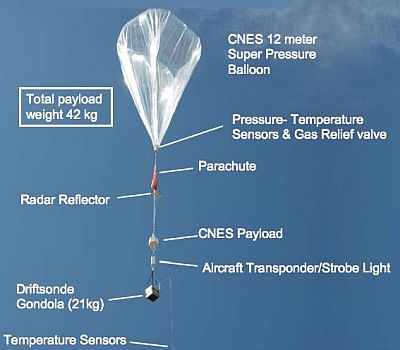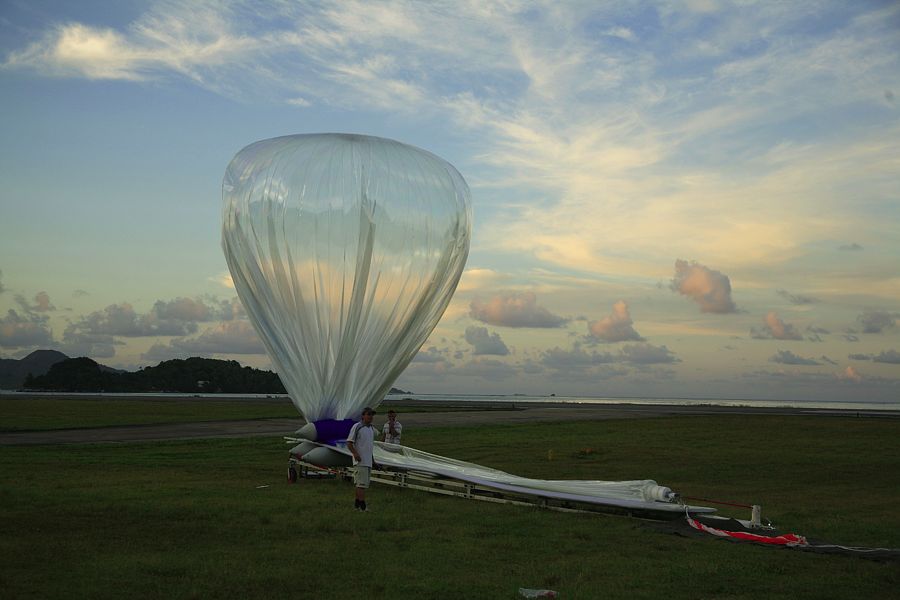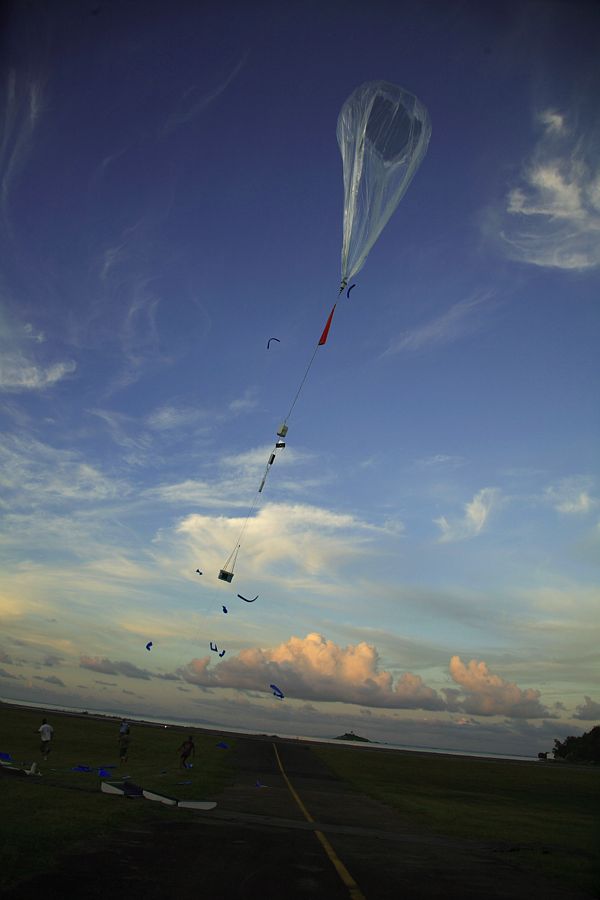Purpose of the flight and payload description
The Driftsonde observing system was developed by the National Center for Atmospheric Research (NCAR) to produce vertical profiles of in-situ measurements, at a low cost above oceans, remote Artic, Antarctic, or continental regions where in-situ measurements from radiosondes are not possible from the ground or from aircraft. Another goal is to provide such measurements in regions covered with extensive cloud shields so that satellite measurements are limited.
At left we can see an scheme of the flight system (click for more details of the gondola). The Driftsonde gondola houses the system electronics which includes an embedded computer, a GPS navigation system, flight level Pressure Temperature Humidity (PTH) sensors, a battery power system, an Iridium satellite two-way connmunication system, a 400 MHz receiver for dropsonde telemetry, and up to approximately 50 dropsonde tubes for the Miniature In-situ Sounding Technology (MIST) dropsonde.
The MIST dropsondes can be dropped down under parachute from the altitude of the carrier balloon to the ground, reaching a landing speed of about 7 m/s. During the descent through the atmosphere, the radiosonde makes measurements once per second, including GPS position, temperature, pressure and humidity. The radiosonde measurements are transmitted to the Driftsonde gondola by a Radio Frequence link in the 400 MHZ band, and then relayed to the operation control center via the Iridium satellite communications system. The radiosondes can be automatically released at predetermined times by the onboard computer or on command through the Iridium satellite link between the Driftsonde gondola using a WEB based system.
For this particular mission, the Driftsonde system was transported by a long-duration super pressure balloon developed by Zodiac with a diameter of 12 meters.
Details of the balloon flight
Balloon launched on: 2/21/2008 at 14:28 utc
Launch site: Seychelles International Airport, Mahe
Balloon launched by: Centre National d'Etudes Spatiales (CNES)
Balloon manufacturer/size/composition: Super Pressure Balloon 12 meters diameter
Balloon serial number: BPS 12 m Nº 52
Flight identification number: PC N018 912, vol BL N° 4
End of flight (L for landing time, W for last contact, otherwise termination time): 2/25/2008
Balloon flight duration (F: time at float only, otherwise total flight time in d:days / h:hours or m:minutes - ): 4 d
Campaign: SCOUT-O3
Payload weight: 21 kg
Overall weight: 50 kg
The balloon was launched on February 21 2008, from Mahe International Airport in Seychelles as part of a technical campaign to qualify the Driftsonde system for the upcoming T-PARC balloon campaign in the Pacific Ocean that same year. After four days aloft the balloon loss Iridium link and was cut down by timer.
If you consider this website interesting or useful, you can help me to keep it up and running with a small donation to cover the operational costs. Just the equivalent of the price of a cup of coffee helps a lot.




